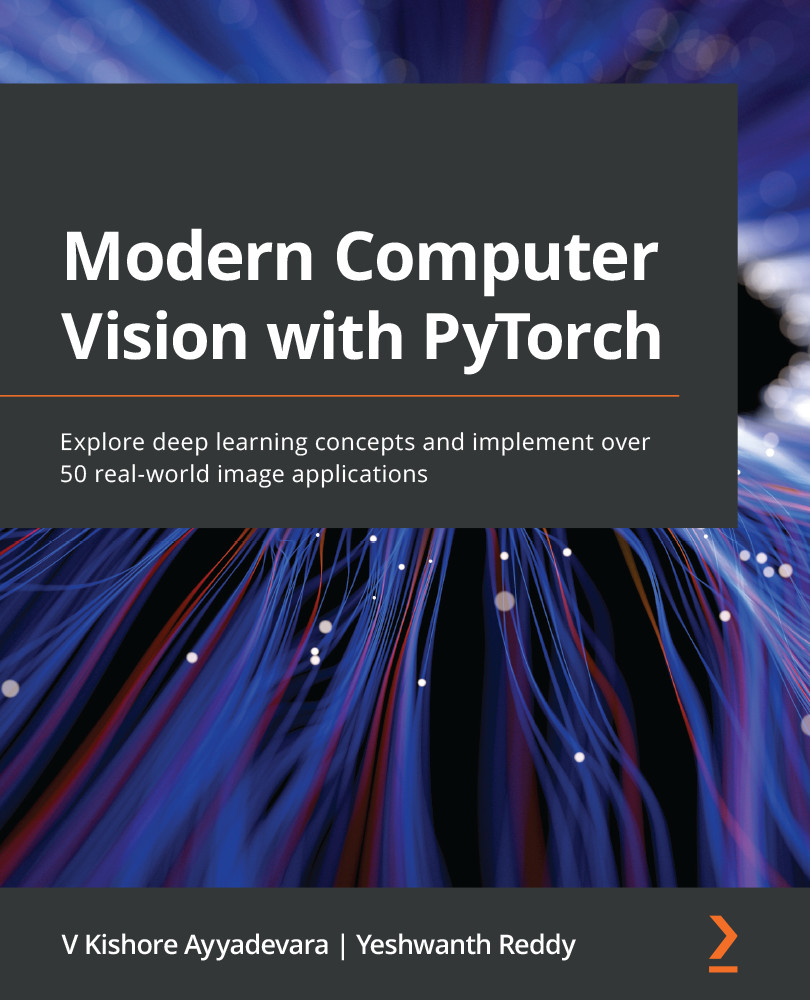- What are the various layers in a neural network?
Input, Hidden, and Output Layers - What is the output of a feed-forward propagation?
Predictions that help in calculating loss value - How is the loss function of a continuous dependent variable different from that of a binary dependent variable and also of a categorical dependent variable?
MSE is the generally used loss function for a continuous dependent variable and binary cross-entropy for a binary dependent variable. Categorical cross-entropy is used for categorical dependent variables. - What is stochastic gradient descent?
It is a process of reducing loss, by adjusting weights in the direction of decreasing gradient - What does a backpropagation exercise do?
It computes gradients of all weights with respect to loss using the chain rule - How does the weight update of all the weights across layers happen during back-propagation?
It happens using the formula dW = W – alpha*(dW/dL) - What...
-
Book Overview & Buying

-
Table Of Contents

Modern Computer Vision with PyTorch
By :

Modern Computer Vision with PyTorch
By:
Overview of this book
Deep learning is the driving force behind many recent advances in various computer vision (CV) applications. This book takes a hands-on approach to help you to solve over 50 CV problems using PyTorch1.x on real-world datasets.
You’ll start by building a neural network (NN) from scratch using NumPy and PyTorch and discover best practices for tweaking its hyperparameters. You’ll then perform image classification using convolutional neural networks and transfer learning and understand how they work. As you progress, you’ll implement multiple use cases of 2D and 3D multi-object detection, segmentation, human-pose-estimation by learning about the R-CNN family, SSD, YOLO, U-Net architectures, and the Detectron2 platform. The book will also guide you in performing facial expression swapping, generating new faces, and manipulating facial expressions as you explore autoencoders and modern generative adversarial networks. You’ll learn how to combine CV with NLP techniques, such as LSTM and transformer, and RL techniques, such as Deep Q-learning, to implement OCR, image captioning, object detection, and a self-driving car agent. Finally, you'll move your NN model to production on the AWS Cloud.
By the end of this book, you’ll be able to leverage modern NN architectures to solve over 50 real-world CV problems confidently.
Table of Contents (25 chapters)
Preface
Section 1 - Fundamentals of Deep Learning for Computer Vision
 Free Chapter
Free Chapter
Artificial Neural Network Fundamentals
PyTorch Fundamentals
Building a Deep Neural Network with PyTorch
Section 2 - Object Classification and Detection
Introducing Convolutional Neural Networks
Transfer Learning for Image Classification
Practical Aspects of Image Classification
Basics of Object Detection
Advanced Object Detection
Image Segmentation
Applications of Object Detection and Segmentation
Section 3 - Image Manipulation
Autoencoders and Image Manipulation
Image Generation Using GANs
Advanced GANs to Manipulate Images
Section 4 - Combining Computer Vision with Other Techniques
Training with Minimal Data Points
Combining Computer Vision and NLP Techniques
Combining Computer Vision and Reinforcement Learning
Moving a Model to Production
Using OpenCV Utilities for Image Analysis
Other Books You May Enjoy
Appendix
